Collectors Today
Russian Fable Literature
In 2005, Cornell alumni Jon Lindseth ’56 and Virginia Lindseth ’56 gave the Library a spectacular collection of Russian fable literature. The Lindseth collection includes more than 2,500 items published over three centuries and offers scholars and students an unparalleled view of this genre. Many of the items in the collection are scarce, and in some instances represent the only copies outside of Russia.
Fables, which use humor, satire and anthropomorphism to tell dramatic tales with a moral message, first appeared in Greek literature during the 8th century B.C. These short stories have been employed by many cultures to poke fun at human frailties, convey political messages and to teach the young moral lessons on ethics, religion or statehood.
The Lindseth collection chronicles the entire history of the fable genre in Russia, from the first Russian-language versions of fables of the ancient world, through the earliest printings of original fables by Russian authors, to the works of early twentieth-century Russian fabulists who addressed overtly revolutionary themes.
The Lindseth Russian Fable Collection is important not only for the light it sheds on the history of fable literature as a whole, but for its illumination of the cultural, political and religious aspects of life in Russia from the beginning of the eighteenth century to the present. For a good part of the eighteenth and nineteenth centuries, Russia became the capital of fable-writing, with the verse fable in particular standing as an important focal point of Russia’s unique contributions to world literature.
Cornell gratefully acknowledges Jon and Virginia Lindseth for their spectacular gifts to Cornell University Library on the occasion of their fiftieth Cornell Reunion.
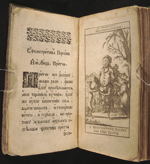 |
Aesop. Pritchi Ezopovy na latinskom I russkom iazyke. Fables in the Latin and the Russian Language... Amsterdam: Jan van Thessing, 1700. [zoom] The oldest printed edition of Aesop’s Fables in Russian, this rare title comprises forty fables in Russian and Latin on facing pages, along with forty-seven engraved illustrations. |
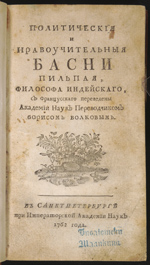 |
Bidpai. Politicheskiia I nravouchitel’nyia basni. The Political and Moralizing Fables of Pilpay, the Indian Philosopher. Translated from the French by Boris Vokov. St. Petersburg: Imperial Academy of Sciences, 1762. [zoom] This is the first edition in Russian of the political and moralizing fables of Bidpai, or Pilpai, the ancient Hindu philosopher. Translated from the French by Boris Volkov, translator to the Russian Academy of Sciences, the work contains sixty-one prose fables. This is the only recorded copy in North America. |
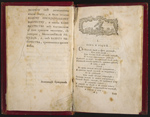 |
Aleksandr Petrovich Sumarokov. Pritchi. St. Petersburg: Academy of Sciences Press, 1762-69. [zoom] Sumarokov established the fable as an original literary genre in Russia. Building upon the tradition of Aesop and Bidpai, his fables focused on common subjects of everyday life. The book shown here is the first edition of the earliest printed collection of verse fables by a Russian writer, and the only separate printed collection of Sumarokov’s fables published during his lifetime. |
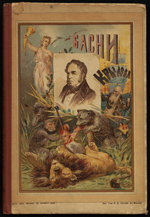 |
Ivan Andreevich Krylov. Basni. Fables. Moscow: Sytin, I.D. Company, 1902. [zoom] Ivan Andreevich Krylov (1769-1844), the most popular and prolific fable writer in Russia, was instrumental in establishing the Russian fable tradition. Beginning with his first published book of fables in 1809, his satirical treatment of recognizable social types disguised as beasts made a strong connection with a broad audience. Krylov’s aphorisms and parables-many of which highlight the virtues of common sense and hard work-endure in the Russian language to this day. |
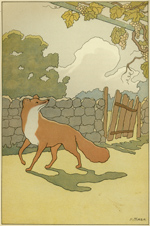 |
“The Fox and the Grapes.” Ivan Andreevich Krylov. Basni. Moscow: Sytin, I.D. Company, 1902. [zoom] The Lindseth Russian Fable collection features hundreds of editions of the works Ivan Andreevich Krylov, Russia’s best known writer of fables. Examples of Krylov’s work in the Lindseth collection span from the late 18th century to contemporary interpretations, including the colorful early twentieth century version shown here. |
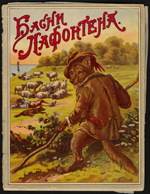 |
Jean de La Fontaine. Fables by Fontaine as Interpreted by Russian Fabulists. Moscow: Trading House of Evdokiia Konovalova & Co., 1910. [zoom] Fables have been used by many societies to impart moral wisdom to young people. Numerous works in the Lindseth Fable collection trace the evolution of fable books aimed at an audience of young readers. |
| View a photo of this exhibition case | |